
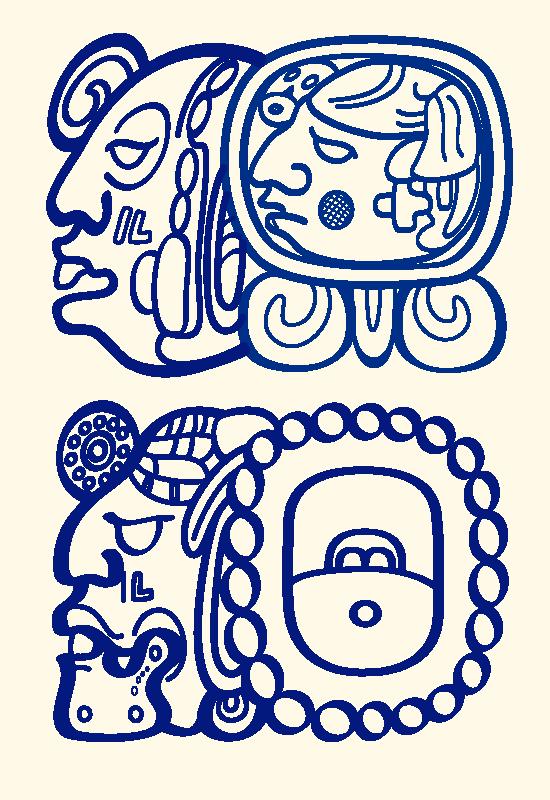
8 Ajaw 13 Mol: Drawing by Jorge Pérez de Lara
8 Ajaw 13 Mol (August 31, 2022)
Jun B’atz’ and Jun Chowen return to Santa Lucía Utatlán:
Congratulations to Our Next 2022 Mini-grant Recipients!
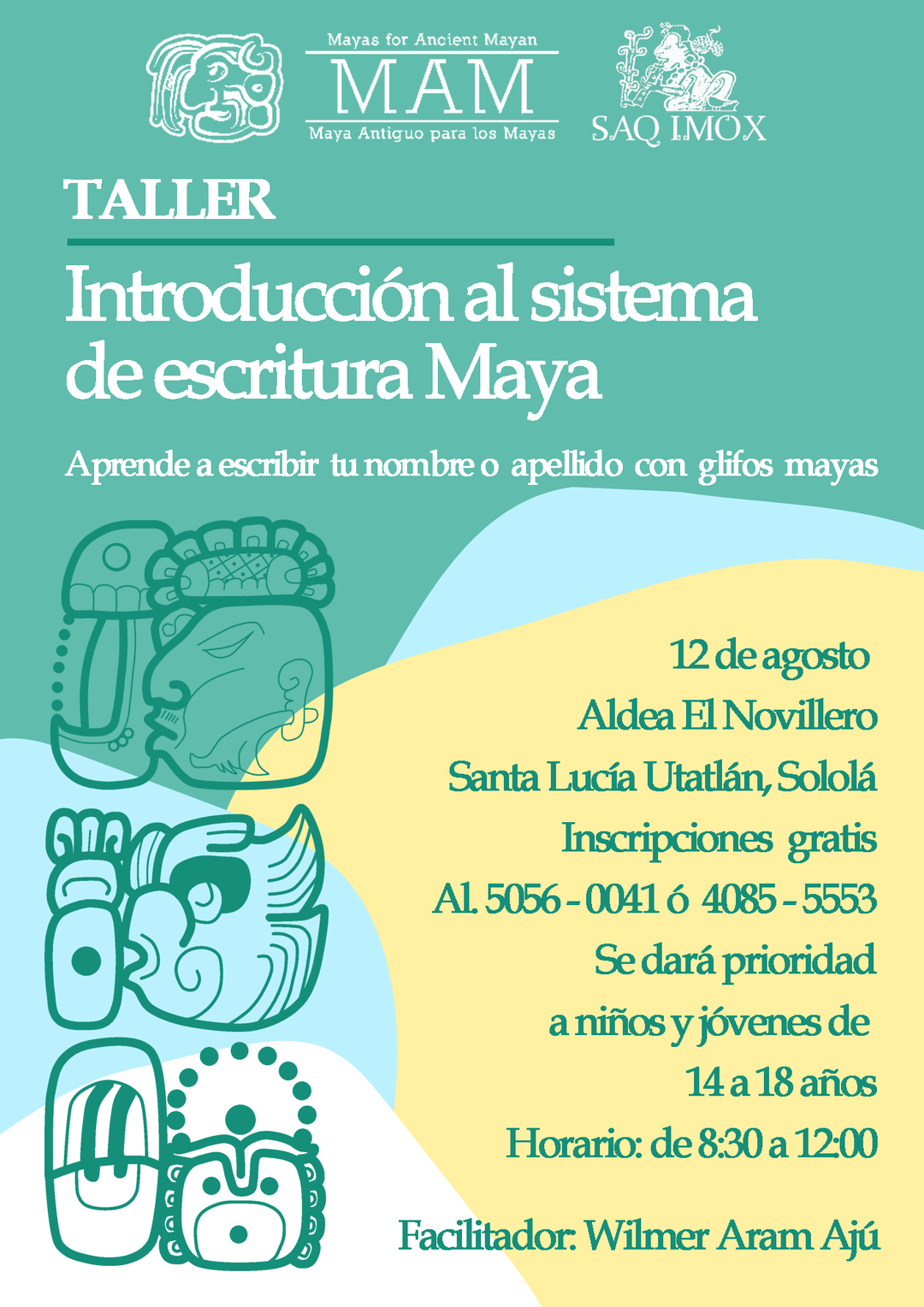
Promotional Poster for the Workshop in Santa Lucía Utatlán, Sololá, Guatemala
As the summer draws to a close I’m reflecting on how many of us, myself included, are finally returning to teaching again in person for the first time in over two and a half years. I have profoundly missed being in the classroom and seeing my students, and it feels so good to be back! I know the same is true for many of our colleagues who are once again teaching in the classroom.
We are very excited to be receiving our very first reports back from our recently awarded mini-grant recipients, such as this month’s report from Marta Dominga Cux Yac from Santa Lucía Utatlán, Sololá, Guatemala. Together with Wilmer Aram Aju, Marta organized and facilitated an introductory workshop for K’iche’ students, within which they utilized various sources, including images from the Mayavase database (www.mayadatabase.com), the Wayeb workbook, and a wonderful comic book version of the Popol Wuj.
I had not seen the delightful comic book version of the Popol Wuj by Mélanie Forné. Here is a link to some of the beautiful illustrations:
Forné, Mélanie. Popol Wuj: Creación del mundo y los primeros hombres. Guatemala: Prensa Libre, 2015.
https://melanieforne.com/portfolio/illustration-autour-des-mayas/#jp-carousel-163
We look forward to hearing back from more of our colleagues and publishing more reports in the upcoming months!
We are still receiving additional applications, and after announcing our first sixteen grantees last month, we are proud to announce the following additional five grantees from different Mayan languages in Guatemala and Mexico:
Avenamar López Gómez
Ignacio Allende, Las Margaritas, Chiapas: Tojolabal
Bety, María Bertha Sántiz Pérez
Las Margaritas, Chiapas, Mexico: Tojolabal
Hermelinda Gómez López
Francisco I. Madero, Las Margaritas, Chiapas: Tojolabal
Iván Jimenez Balan
Maní, Yucatan, Mexico: Yucatec Maya
Mario Caal Jucub and Marina Rosales López
Cahabon, Alta Verapaz, Guatemala: K’iche’
Romelia Mó Isém and Sak Chuwen
Palin, Escuintla, Guatemala: Poqomam
Through donated funds designated for the publication of online presentations, we were very happy to be able to contribute to the conference, “3000 years of Mayan writing, the development of writing from the preclassic to today,” which recently took place in Palin, Escuintla, Guatemala, during August 1-6, 2022.
This conference was a team effort, organized by the team from the Sak Chuwen Center for Research and Studies of Maya Epigraphy (cieemaya@gmail.com), with Iyaxel Cojti, Magdalena Pérez Conguache, Walter Paz Joj, Leonardo García and Romelia Mó Isém. This team worked together with the Department of Anthropology of the Americas of the Institute of Archeology and Anthropology at the University of Bonn, with Nikolai Grube and Alejandro Garay, co-facilitating the workshops. Co-sponsors of this event also included La Oficina de Pueblos Indígenas de la Municipalidad de Palin, Escuintla, La Comunidad Lingüística Poqomam, and the Asociación Cultural Poqomam Qawinaqel.
We are looking forward to publishing the videos from this conference in the near future!
Congratulations to all of our recipients, and once again, a hearty thanks to our supporters for your generous donations! Stay tuned for more reports to come!
Sincerely,
Michael Grofe, President
MAM
Introduction to the Maya Writing System:
Santa Lucía Utatlán, Sololá, Guatemala
Marta Dominga Cux Yac: Organizer
Wilmer Aram Aju: Facilitator
1. General data of the activity
Development of workshops on the Mayan writing system as an introduction to Maya epigraphy for young people from the municipality of Santa Lucía Utatlán, in Sololá.
2. Objective and scope of the activity
Contribute to the learning and revitalization of writing as ancestral knowledge in the K’iche’ Maya region of western Guatemala. Young people of different ages are trained to enrich their knowledge through this writing.
3. Analytical Memorandum
In the development of the workshops in the municipality of Santa Lucía Utatlán, Sololá, Guatemala, demands for participation became visible, so workshops were proposed at three times on the dates of August 12, 15 and 17, 2022. Participants of different ages came from different communities, and some came from another department. This cooperation was an achievement, since a lot was learned in these workshop classes. At the same time, there was satisfaction as the participants requested more workshops, such as the follow-up of what was learned in an intermediate class.
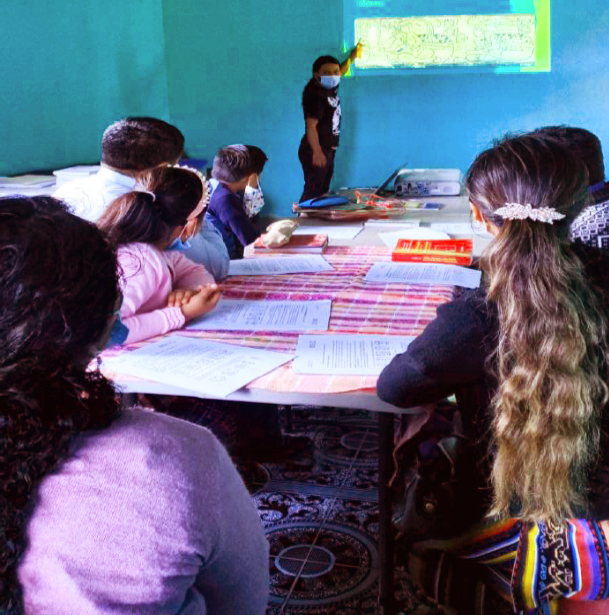
Students are shown an image of scribes from Maya vase K1185
The following information was covered in the workshop:
A. Aj Tz’iib’
As found in the codices, the essence of aj tz’iib’ was revealed. The aj tz’iib’ as it is said, actually describes the person who writes, the writer or the scribe and that formerly was the person who dedicated himself to the reproduction of the tz’iib’ system on different types of materials and techniques. In ancient times the scribe could also take a specific name of aj uxul “the carver”, aj b’ik’il “engraver”, aj wohol “he of the signs.”
B. Jun B’atz’ and Jun Chowen
A reference is found in the Popol Wuj, in the K’iche’ language, about the “artistic abilities” that the Mayan scribes/painters had when they describe the characteristics of the brothers Jun B’atz’ and Jun Chowen (calendrical names meaning One Monkey, One Monkey), who are considered mothers and fathers of art and of the word:
https://melanieforne.com/portfolio/illustration-autour-des-mayas/#jp-carousel-166
C. Use of the Syllabary
Syllabogram: also called phonograms, they are signs that represent meaningless sounds, such as vowels (v), consonants (c) and syllables (cv, vc, or cvc), which are therefore called “syllabograms.” (EDUCALINGO, Syllabogram).
A syllable is a minimum unit of organization in a sequence of sounds (Kettunen and Helmke, 2020:8).
Learning about the Maya Writing System
D. Auxiliary/diacritic signs
Like semantic determiners, auxiliary signs are signs that lack reading value. They serve to help the process of writing or reading other signs. In Mayan writing, a diacritic has been identified as the so-called duplicator.
E. Structure of a Word
Glyphic block: group of signs organized in a “quadrangular” space. The signs that occupy more space are called main signs; those who They occupy less space (normally half of a main sign) and are called affixes (prefixes, suprafixes, subfixes, postfixes or infixes).
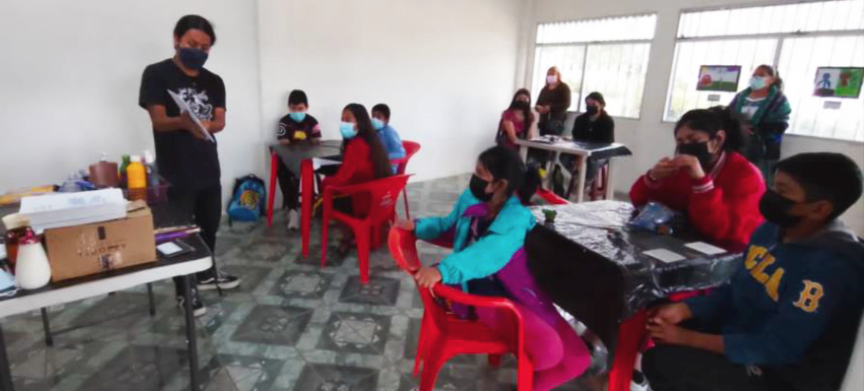
Students learn to identify logograms
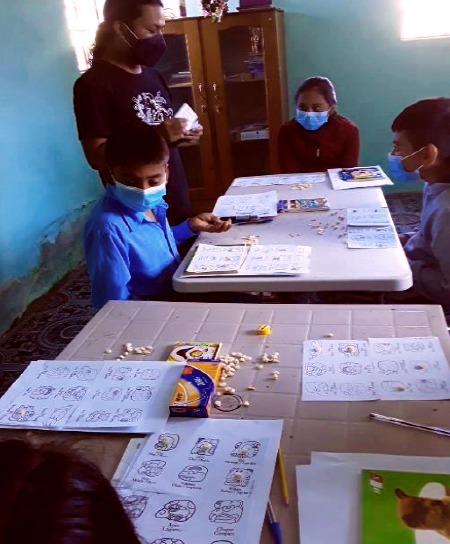
Students learn to identify logograms
F. Structure of the Text

Students work learn to spell their names
G. Structure of a word
Final vowel omission: in the Mayan languages the vast majority of words end in a consonant (-C), but their syllabograms ended in a vowel (CV), the scribes determined, by convention, that the vowel of the phonetic complement or of the last syllabic link should be ignored during reading.
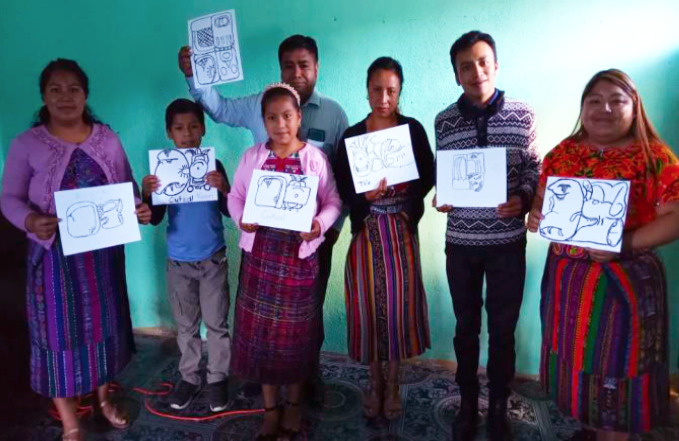
Students show their work after writing their names
This learning process contributes to building a change in which ancestral knowledge about the study of Mayan hieroglyphic writing can be rescued. In the territory it is a new system that is being implemented thanks to the contribution of Maya Antiguo para los Mayas (MAM).
It is a change that has occurred for these generations, in which some of them have been surprised by the writing and commit to continue practicing with the materials provided.
References
EDUCALINGO. Syllabogram [online dictionary].
Available at https://educalingo.com/en/dic-en/syllabogram (accessed
31 August 2022).
Kettunen, Harri, and Christophe Helmke. Introduction to Maya Hieroglyphs (Wayeb) or https://www.mesoweb.com/resources/handbook/IMH2020.pdf (Mesoweb). English version. Workshop Handbook, Seventeenth Edition, 2020 (accessed 31 August 2022).
Wikipedia contributors. “Maya script.” Wikipedia, The Free Encyclopedia, 30 Aug. 2022 (accessed 31 August 2022)
Marta Dominga Cux Yac, Organizer
Wilmer Aram Aju, Facilitator
Santa Lucía Utatlán, Sololá, Guatemala, C.A.


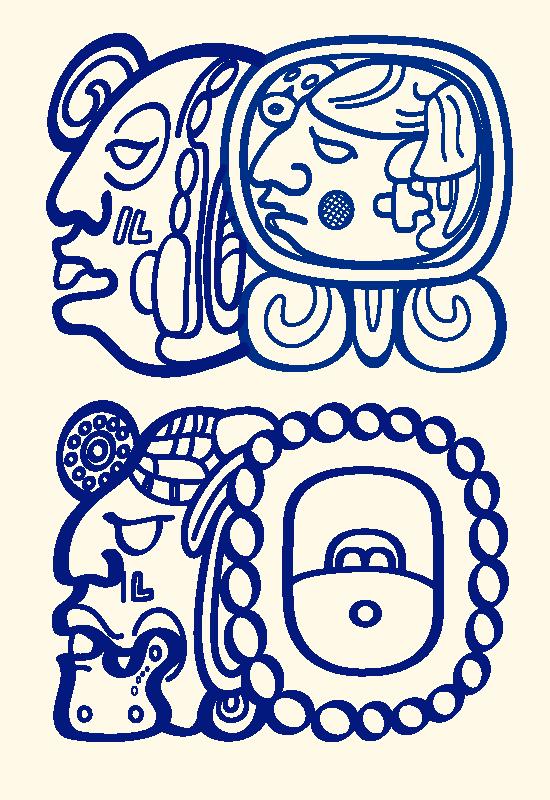
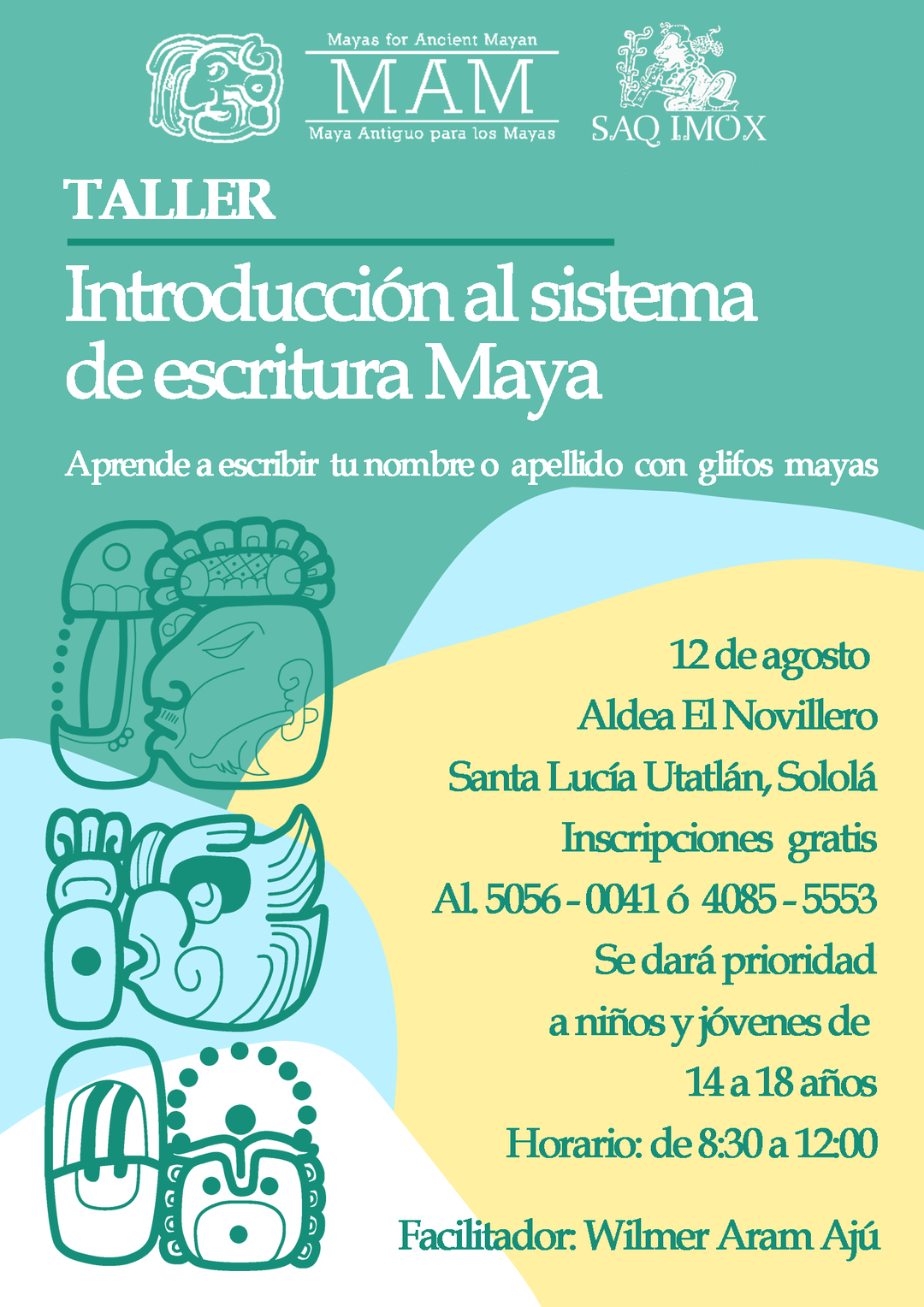
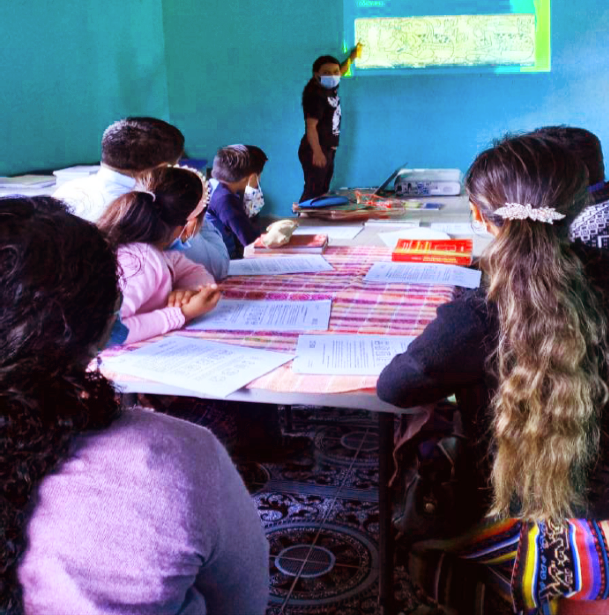
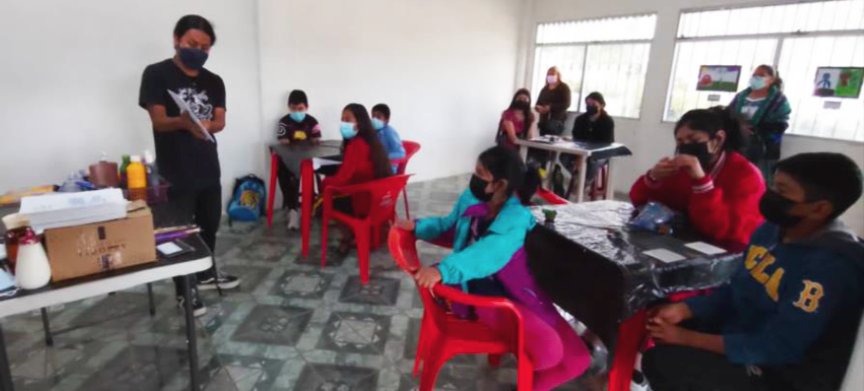
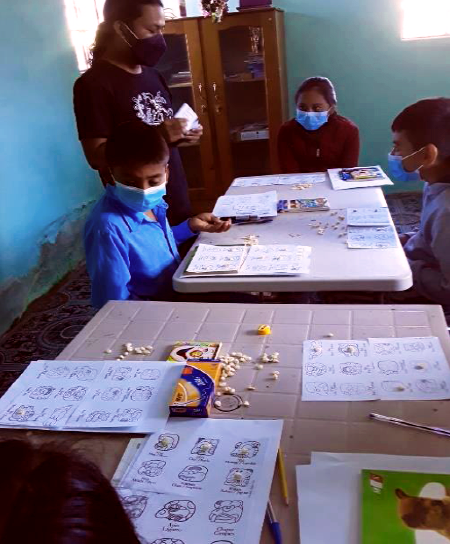
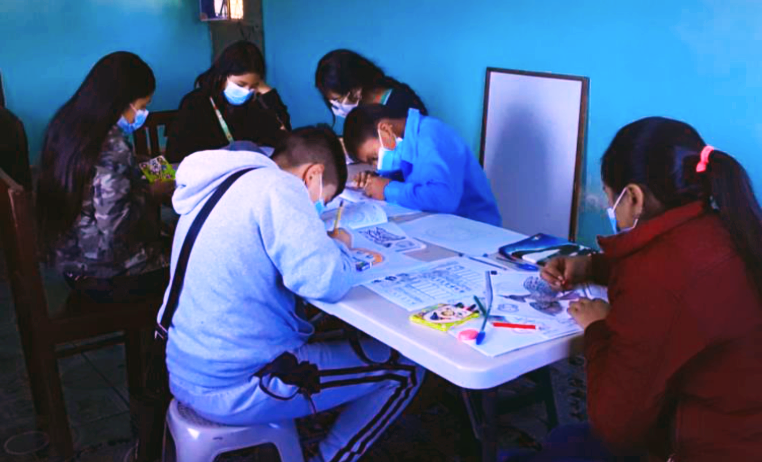
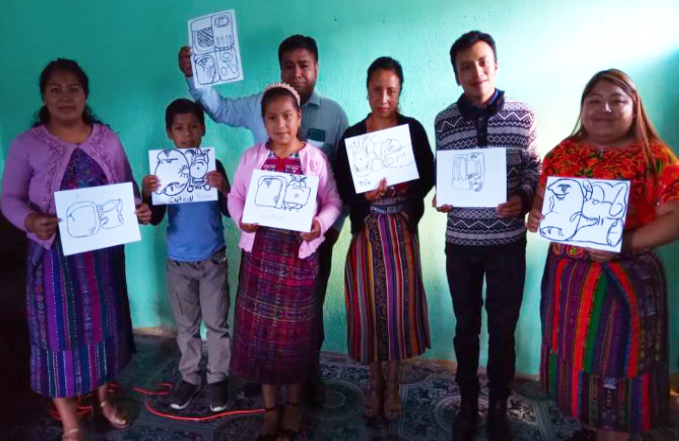 Los estudiantes muestran su trabajo después de escribir sus nombres
Los estudiantes muestran su trabajo después de escribir sus nombres